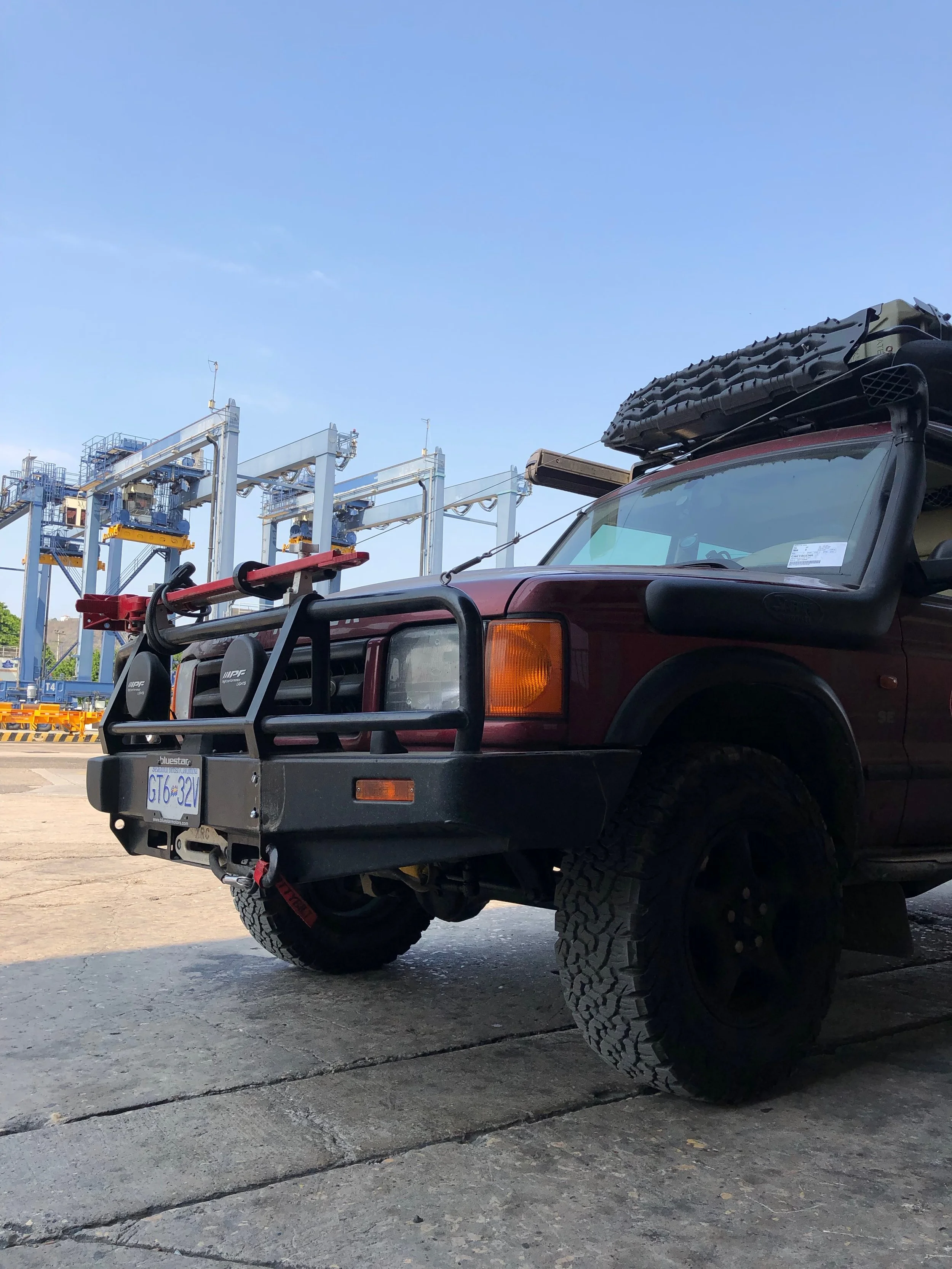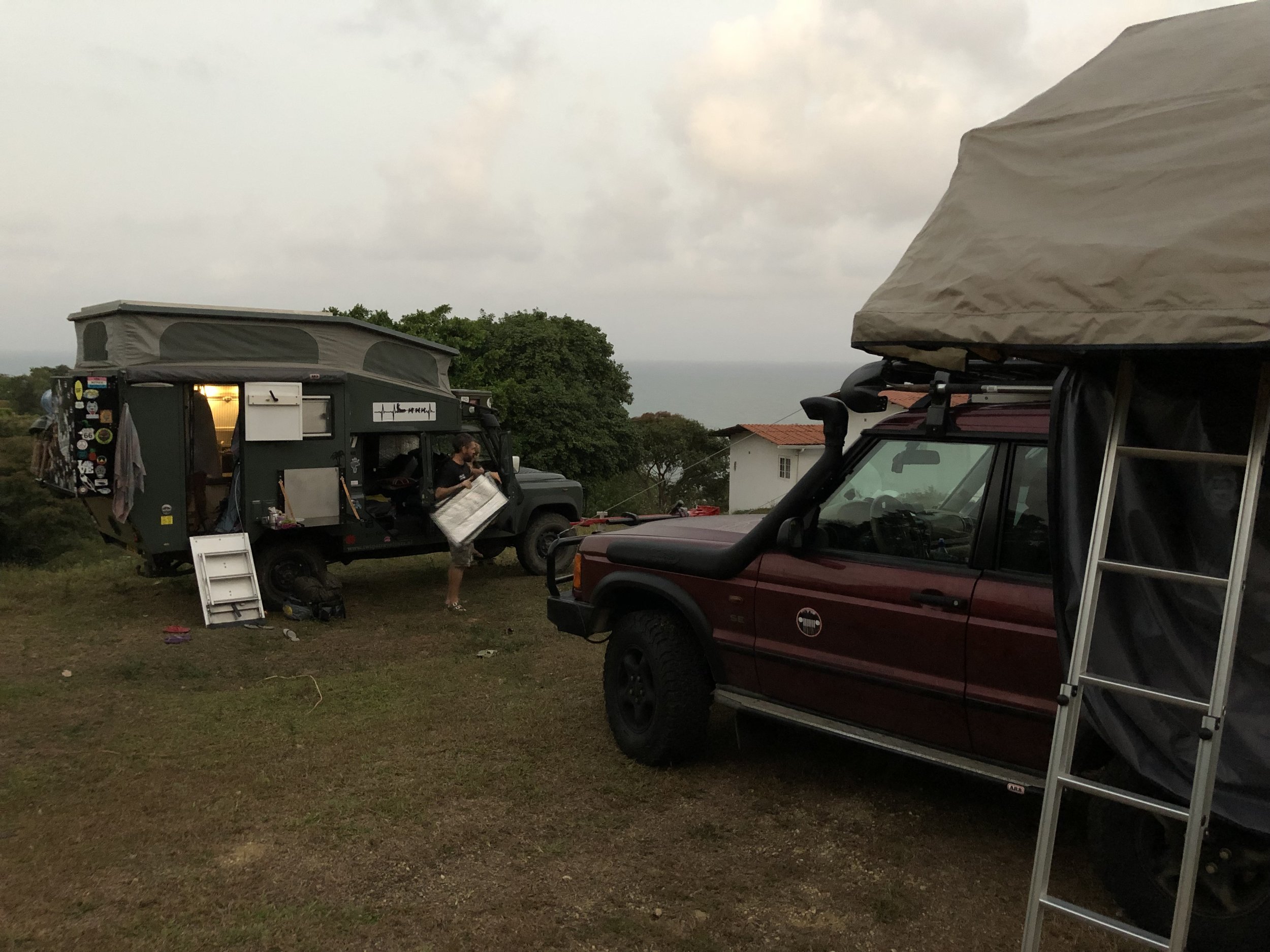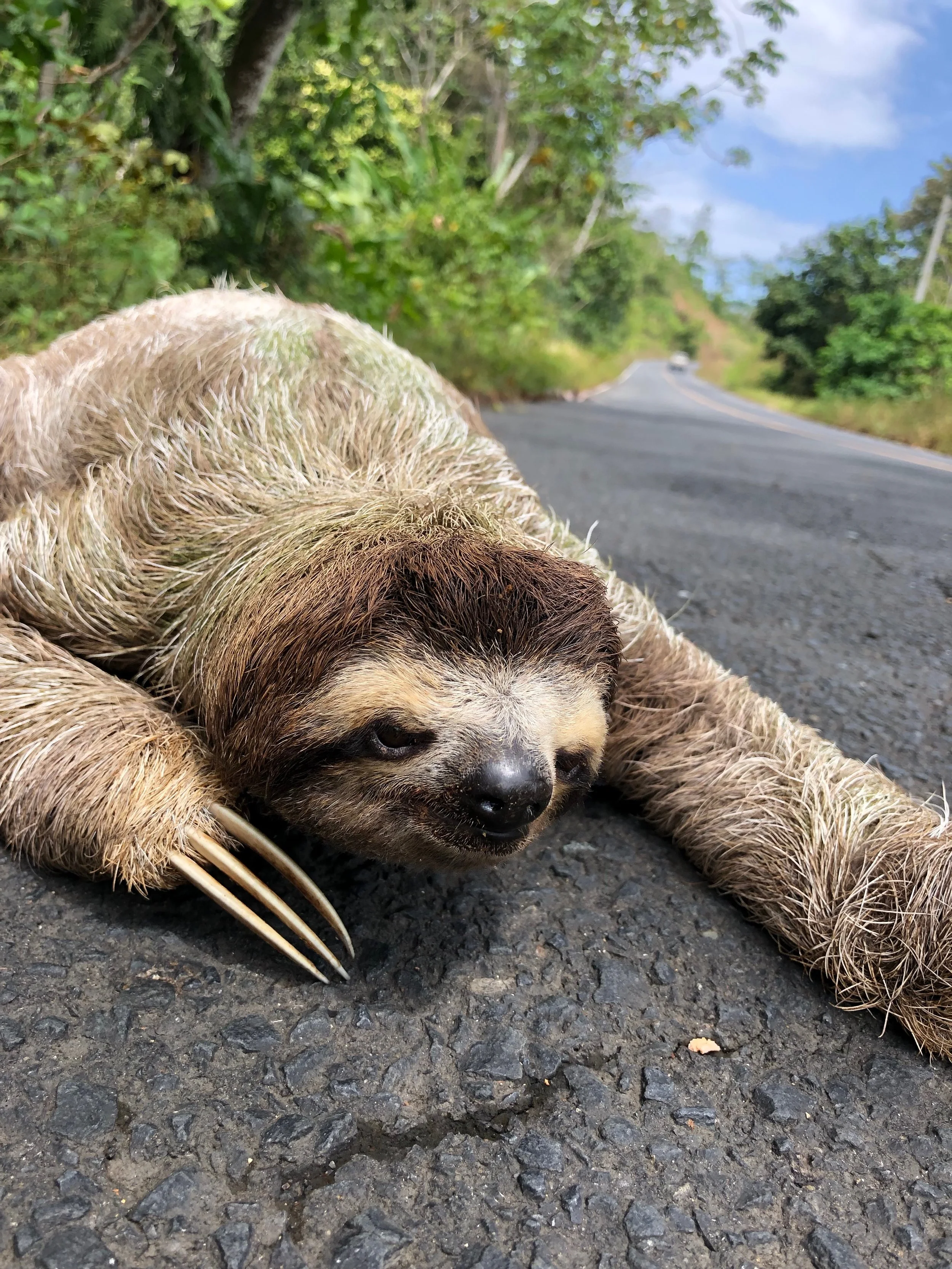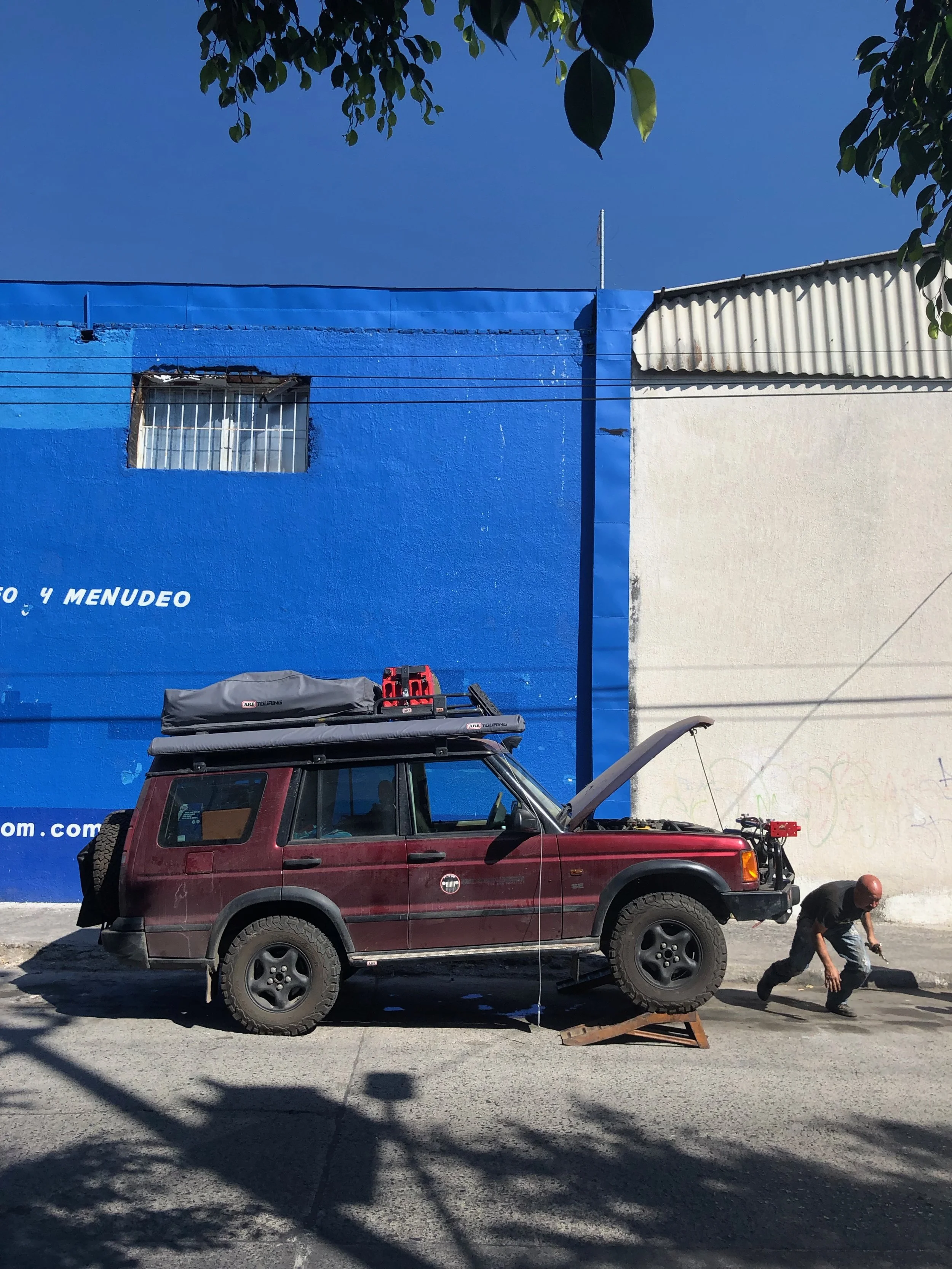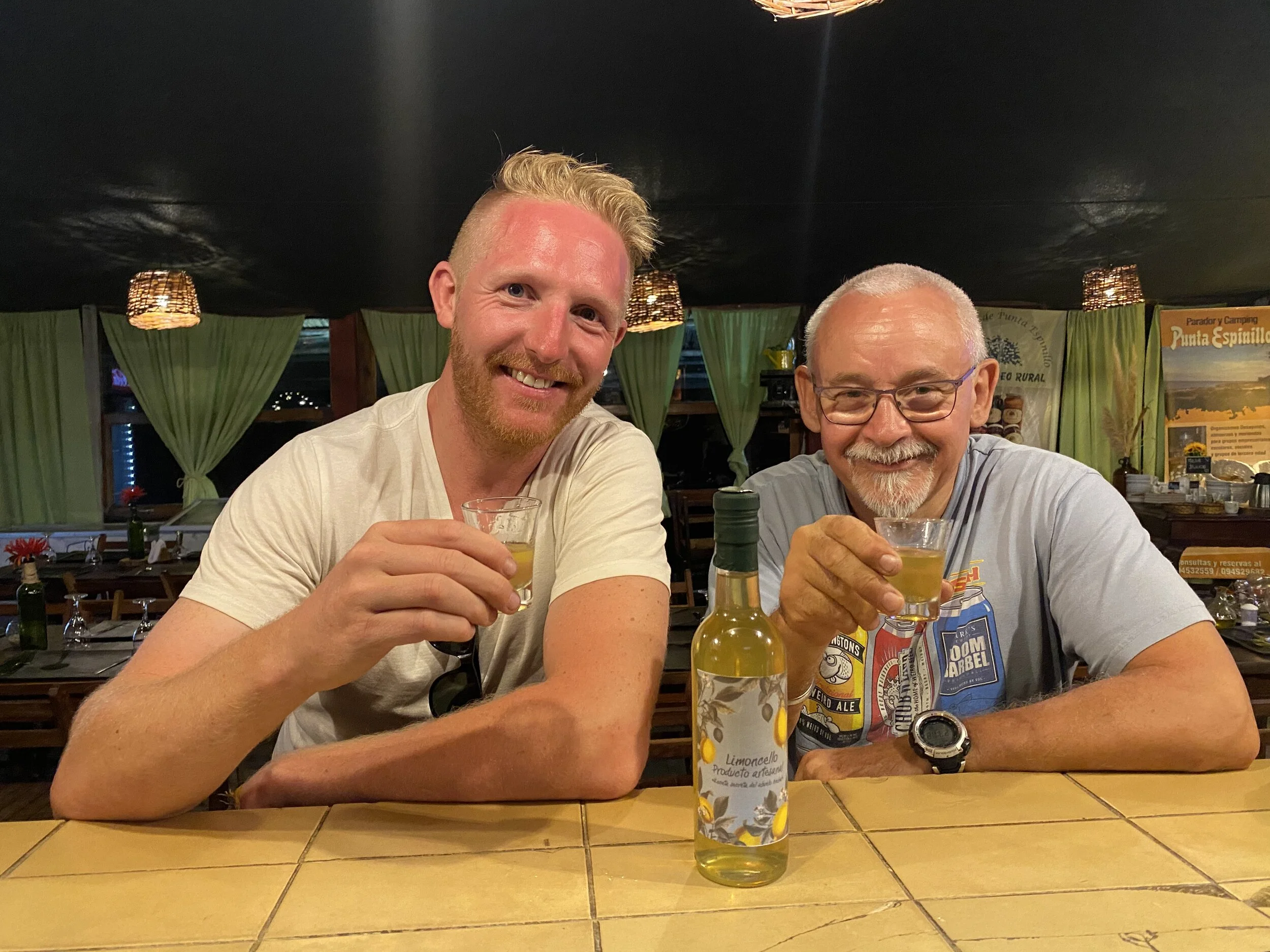The Darien Gap
24th February – 12th March
This post follows my arrival into Panama, getting the car onto the ship in the port of Colon (Panama), the shipping process in general and then getting the car out again on the other side from the port in Cartagena. During this time, I sailed from Panama to Colombia on a sailboat which was great fun but something I’ll cover in a separate post. Retrieving the car from the other side in Colombia is also temporally mixed in with some fun times with my friend Norman and the crew from the sailboat in the Colombian city of Cartagena but, again, I’ll keep that separate for a later post.
The passage around the Darien Gap marks my crossing from Central America into South America. The territory itself is without roads and is impassable both because of the harsh terrain – a combination of marshland and mountainous rainforest – and the rebel military forces active in the area (specifically the Marxist Revolutionary Armed Forces of Colombia known as the FARC). I’m far from alone on my overlanding travels across the Americas and the shipping route around the Darien Gap is done frequently be people on similar adventures to mine. It was learning this fact that you could ship around the Darien Gap that was the lynch pin of the planning for my trip – until I learned this was possible, my plans were constrained to only driving through South America.
The big day at Cartagena port - container opening day!
Panama:
The drive in to Panama City was uneventful other than for the fact that it was very long. I would consider a long-driving day to be seven or eight hours and this one was ten (not including a border crossing!). I actually don’t get tired driving that many hours. So long as the car is in good shape, the police are leaving me alone and borders are tolerable, I could drive all day and then some. The scenery is always new and interesting, I listen to music, do Spanish tapes (Pimsleur on Audible) and enjoy the serenity - this is what I signed up for. Perhaps the exception is that once it gets dark after a full day on the road, things get harder quickly and I want to be at my destination.
Panama City is two really two different cities. There’s a quaint old town which is small, clean and well preserved. It’s got some great old architecture, plazas, nice cafés and bars. Then there’s the rest of the city which is modern, soulless, filled with ex-pats and tax dodgers. I don’t much like Panama nor Panama City. Like Costa Rica, I had been here before and I didn’t need to see the canal again so I pretty much opted out of doing anything other than getting my car onto a ship and getting myself onto a sailboat.
I also managed to immediately get sick after arriving in Panama City, I think for the first time in my journey, so the days here besides being somewhat mechanical were less pleasant for this reason.
The drive through Panama - and I covered over half the length of the country in a single day - was stunning the whole way across (until I got to Panama City)
Slight miscalculation on gas station intervals. Thankfully I always have 40 litres of premium on roof
Arriving exhausted in Panama City from a full day on the road and not feeling overly well - this gecko kept me company while I ate Japanese from a chain restaurant which was all I could find to eat near the hostel at that hour
The nice part of Panama City
Panama City’s central plaza
Nicely preserved ruins of an old church in Panama old town
Some buildings like this were reminiscent of Cuba, a vibe I really enjoy
A very loudly decorated Argentinean restaurant
Processing the car in Panama:
The shipping process around the Darien Gap requires (or at least is highly recommended) the use of a shipping agent. We used Tea Kalmbach from Seabound Marine for this. While I had initially been in contact with Martin from IVSSUK, Tea was more responsive and seemed to be the mostly commonly recommended amongst everyone I talked to. Nearly everything is done via text on WhatsApp with occasional email requests and instructions. It’s a relatively light touch service and she did her best to answer our questions as they came up. In the end, we created a large WhatsApp group with everyone who was shipping on the same boat to try to share information and help each other – somewhat of a support group for a mess of confused shippers.
A nuance to the Darien shipping is that you save money by shipping in 40-foot container rather than a 20’. Apart from being cheaper, the 40’ also comes in a ‘high cube’ with a 2.56 meter clearance on the container door which is a huge help for those like me who have a roof top tent on their car. So, this dynamic creates a need to find ‘container buddies’ to share your containers with. Thankfully there’s a service called just that - ContainerBuddies - which is a website dedicated to finding people who are looking to share 40’ containers and, it would seem, the Darien crossing would have to be one of the prime shipping routes for this service. I sent dozens of emails to people I was matched with as far back as Nicaragua trying to find my container buddy. And despite this, I didn’t end up finding one. Thankfully the shipping date I chose had a lot of overlanders crossing the Darien and Tea from Seabound was able to match me with another client… well, actually six clients – my Land Rover was to share a 40’ shipping container with six Czech motorbikes.
The first step for shipping from Panama was to get clearance by the Panamanian authorities to export the vehicle. This involved going to a police inspection site (Direccion Investigacion Judicial or DIJ). Here you showed up early in the day, waited for about 4 hours for a three-minute inspection of the vehicle where they essentially just eyeballed your VIN number on the car chassis. Pleasingly during the inspection, I met most of my soon-to-be shipping friends who I would go on to share the arduous shipping process with. On this day I met Sylvain and Marjorie (a French couple in VW T5), the Barnsley’s (UK family of four in kitted out Defender) and Horst (solo German also travelling in a VW T5 with his dog).
Apart from seeking out a bank to pay Seabound Marine, there wasn’t a lot else required in Panama City for the process. Having got our documents from DIJ (and Interpol screening to confirm our cars weren’t stolen), I coordinated with my new friends to head up to Colon where the car would ship from in order to drop it at the terminal. We found a campground on the coast near the port, did some last-minute document printing and prepared to part with our cars at the port the next morning.
The drop-off process at Colon took approximately four hours in total but my memory recalls it taking days. We had a very rough instruction list provided by Tea to follow but the coordinates provided didn’t always match up, descriptions were vague at best and nothing went smoothly. It was frankly a hilarious series of meetings with various people who touched the shipping process. From the broker to the immigration people to the inspection agent to one hundred other people who arbitrarily had to stamp or produce some obscure document. It was like a game show on TV or a computer game from the 90’s – a series of challenges (in Spanish!) and every time you completed a challenge, you jumped into a taxi, drove or hurriedly walked in the direction of the next person who held the next challenge. They invariably made everything initially sound as though it weren’t possible but after some awkward persistence, eventually they would provide you the stamp or the document or take the payment and allow you to progress to the next level.
Finally, we parted with our beloved cars as we ticked the last of the instructions from our checklist, passing all the challenges we’d been given. For all of us, it was difficult to let go – to let someone else get behind the wheel of our babies and drive them into the bowels of the port. As overlanders, the vehicles are more than just cars, they are our homes. For the first time in a long time, we were all packing bags with a select few clothes and possessions. There was a sense of accomplishment but I think we all felt a bit naked and lost due to the forced separation from our vehicles.
DIJ inspection to check out VINs and meeting my new friends (Jamie, Sylvain & Horst) for the first time
The Barnsley’s Defender 130. What a beast - these guys did an amazing job of turning an already incredible machine into an overlander’s dream
Surprise car inspection from a stray cat
More paperwork. The guy at the counter is from Argentina and rode his motorbike solo to Alaska and turned around to head back home to Buenos Aires. He was crossing back into South America on the home stretch when we met him - what a legend!
Convoy of shippers the night before we turned over our cars. Rancho Juancho on the North coast of Panama close to Colon
Best photo I have of Jamie’s Defender setup. He sleeps himself, wife Angie and two kids comfortably in that thing
Jumping through hoops at the Port of Colon
Following the inspections of the vehicles - the final stage - we hand over the cars to the port guys who drive off into the guts of the port, leaving us with a confused sense of loss at being parted from our vehicles
Bye Jolene, see you in Cartagena
Retrieving the car in Cartagena:
Dropping off the vehicle in Panama would turn out to be a lot easier than retrieving the car in Colombia. To begin with, our ship had mechanical issues so it was put onto another ship three days later, adding to the wait time in Cartagena. Thankfully it wasn’t a big chore to sit out these extra days in Cartagena, not just because I had one of my best friends join me for that period (not to mention a bunch of new friends from the sail boat) but Cartagena has to be one of the most fun cities I’ve visited.
Speaking generally, my time in Cartagena was spent partying by evening, staying out really late and then dragging myself up really early every morning to be at the port (8am typically) to attempt to move the car retrieval process forward. It was always the same crew at every point – the Barnlsey’s, Sylvain, Horst, the six Czech bikers, a Suisse, an Argentinean and some local dude importing a Mercedes. With the exception of the Czech bikers who were extremely impatient to get on the road, we generally faced the arduous series of hurdles with good humour and enjoyed how hilariously inefficient the whole thing was.
In all, I think the first day in Cartagena was the 5th of March, first day at the port was on the 7th of March and I was out by the 13th (again, memory holds this period as being so much longer). Apart from the Sunday, I was at the port bright and early every day. I would also say that nine days in Cartagena generally is too much and wouldn’t advise anyone to stay that long voluntarily.
Rather than a boring written blow-by-blow of the seemingly countless days at the port, below is the pictorial documentation what it took to get our cars and get back on the road. After a little while, the tougher experiences make for the best memories (and stories) and I now look back on this time fondly – probably in large part to the great friends I met during the saga and who I still keep in weekly contact months later.
Sylvain, Jamie and I trying to sort out our import permits for the cars into Colombia
The very welcoming customer service window at the Seabound Marine offices in Cartagena
When in doubt, Google Translate. Usually better than no translation, often not by much
Hungover but nevertheless usually put forward as the best Spanish speaker of the group (I wasn’t), I adopted this stance on many occasions to converse through the window at the Seabound office
Our checklist for the week. We skipped some steps and performed many others. But it was better than nothing as a guide
Outside DIAN (Dirección de Impuestos y Aduanas Nacionales aka place for taxes and customs)
Absolutely ridiculous set of instructions. This contains my favourite of them all: “…pay the 73$ (at some supermarket)…”
Zbyněk (head of the Czech biker gang) and I pestering Rafael at the ‘Portuaria’ to release the car
Sylvain and Jamie getting nowhere with Rafael at the Port office
Jamie’s kids taking care of Horst’s dog while we’re all down at the port bashing our head against a brick wall
Down at the port watching the monkeys climb on the building while we wait. There were also lizards and parrots to keep things interesting
The whole gang crammed in at the Seaboard office. I’ll say that while the process sucked, it was generally a great crew of people who found the funny side in situations without funny sides
The whole group being sent off on its next mission from Cartagena port
Every time we got sent on a new mission, we all piled in taxis to the next place for the next challenge. Often times we’d hail three taxis to fit everyone then all barge into the next building together
Off on a solo mission to deal with my insurance
One of the smarter moves: opting for a couple beers and some lunch during some enforced waiting time
Progress: Jamie and Sylvain getting all Village people and throwing down some YMCA moves in the port. Here they’re celebrating their appointment to open the container and inspect the cars
Back to DIAN for more waiting. DIAN put a block (‘bloqueo’) on our container which added 24 hours to my container and let the rest escape a day earlier than me and the Czech bikers
Back in the port office wonder WTF is going on
Picking up my temporary import permit (aka TIP - the ever important document you need to get your car into each new country)
We must have gone in and out of the port office one hundred times. And every time, these guys wanted to slow us down by inspecting our identification and giving us a pass. After a while we just started hopping the fence or sneaking around the side of the building which occasionally got us in trouble
The container inspection required long pants and covered shoes for safety. Zbynek left his pants packed in his bike. But he had his pyjamas
Finally time for the Czech bikers and I to get a look at our container after the block had been removed by the customs people
Heading in for inspection. Ironically, not sure what good inspections were - heaps of us had minor issues (some others that I know of major issues) but by the time you’ve waited around a week to get hold of your vehicle, the last thing anyone is going to want to do is file a claim for damages. We just signed off and moved on
Finally!!! Our container!
My car’s in the back, behind all those bikes
First glimpse of my beautiful car in over two weeks!
Apparently when you pay for the shipping, you also buy the tie downs and they are yours to take or dispose of. So the Czech bikers packed them up nicely and as far as I know tried to sell them for a bit of extra cash
She’s out! And only with minor damage
Behind the wheel and feeling great about it
So happy to see my car on the streets of Cartagena (and in South America), I stopped at a local parking lot for a private little photo shoot

